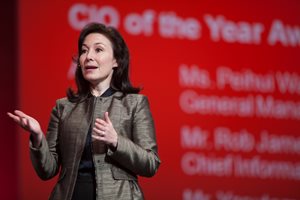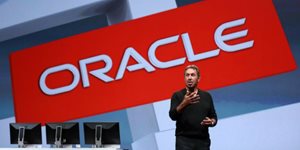Oracle's CTO: IaaS Will Be Leading the Way in the Future
Oracle CTO Larry Ellison is very well-known for his stark statements and for provoking his rivals. This time, on an earnings phone call with analysts, Ellison took on Amazon and Microsoft, saying that Oracle now has “a huge technology lead” over Amazon Web Services and Microsoft’s Azure cloud computing service as the Redwood Shores-based company reported better-than-expected profits in its fiscal third quarter on Wednesday. Total cloud-related revenues across SaaS, PaaS and IaaS was $1.2 billion for the third quarter out of total Oracle revenues for the period of $9.3 billion.
“We continue to see outside growth rates in our cloud business, especially when compared  with our key competitors who’re all seeing slowing growth. But more importantly, the increase in revenue from our cloud business has overtaken new software license business decline on an annual basis. Next year I expect our cloud revenue will be larger than our new software license revenue,” said CEO Safra Catz.
with our key competitors who’re all seeing slowing growth. But more importantly, the increase in revenue from our cloud business has overtaken new software license business decline on an annual basis. Next year I expect our cloud revenue will be larger than our new software license revenue,” said CEO Safra Catz.
However, more importantly, to me, the whole story of the earnings call and the revenue report goes beyond Oracle’s success and tells us about the shift happening in the industry. If you bear with me, we will discuss the status quo shortly.
Among Ellison’s talking points, these two stood out most to me. First, he states that AWS can only handle "relatively small databases" compared to bigger ones that he claims will run "ten times faster in the Oracle cloud versus the Amazon cloud.” Well, by now, we all know that big enterprises with huge databases have been utilizing Amazon’s servers so maybe Ellison should prove it with some tangible evidence to convince its stakeholders, as it sounded a bit of an exaggeration to me. He not only claimed that some Oracle workloads run up to 10 times faster on Oracle Cloud than AWS but he also emphasized that it costs less to run Oracle workloads in the Oracle cloud than the Amazon cloud. Then, my question is - Does it have anything to do with Oracle doubling license fees to run its software in AWS?
As you can tell, his declarations didn’t really entice me but it is apparently not the case for  Oracle’s investors as its shares surged 5.34% in after-hours trading on Wednesday to $45.38. Ellison stressed that hundreds of thousands of database customers will move most of their databases and most of their workloads to the cloud, and believes strongly that Oracle will receive the lion’s share of those businesses. In fact, he claimed: “Some of our largest customers' are negotiating huge infrastructure as a service contracts to move all their databases to the Oracle cloud. You can expect some of those big deals to be announced in the coming weeks.”
Oracle’s investors as its shares surged 5.34% in after-hours trading on Wednesday to $45.38. Ellison stressed that hundreds of thousands of database customers will move most of their databases and most of their workloads to the cloud, and believes strongly that Oracle will receive the lion’s share of those businesses. In fact, he claimed: “Some of our largest customers' are negotiating huge infrastructure as a service contracts to move all their databases to the Oracle cloud. You can expect some of those big deals to be announced in the coming weeks.”
Will IaaS Be Leading the Way in the Future?
His second prominent talking point was that Oracle believes there is a big infrastructure-as-a-service swing coming and Ellison said: "This is the first time we've ever had a technology lead in infrastructure-as-a-service. Before long, infrastructure-as-a-service will become Oracle's largest cloud business."
Before discussing whether or not the infrastructure-as-a-service market will make a splash as Ellison claimed, I will take a step back and, in the spirit of March Madness kicking off yesterday, try to briefly make a sense of this “-as-a-service” madness happening in the IT industry. I won't go as far as develop brackets, but the competition will be palpable.
These days, we hear “-as-a-service” for pretty much everything we could do in the cloud. Although it may feel like the IT industry is overkill with utilizing the term, this is a great business model as it consolidates software, infrastructure and business processes all together to deliver organizations plug-in, modular, scalable and consumption-based services. Though there are many different coined versions of “whatever-as-a-service”, Infrastructure-as-a-Service (IaaS), Platform-as-a-Service (PaaS), and Software-as-a-Service (SaaS) are the only ones that have official recognition from the National Institute of Standards and Technology (NIST). Here are definitions by NIST:
-
Infrastructure-as-a-Service (IaaS): The capability provided to the consumer is to provision processing, storage, networks and other fundamental computing resources where the consumer is able to deploy and run arbitrary software, which can include operating systems and applications. The consumer does not manage or control the underlying cloud infrastructure but has control over operating systems, storage and deployed applications; and possibly limited control of select networking components (e.g., host firewalls).
-
Platform-as-a-Service (PaaS): The capability provided to the consumer is to deploy onto the cloud infrastructure consumer-created or acquired applications created using programming languages and tools supported by the provider. The consumer does not manage or control the underlying cloud infrastructure including network, servers, operating systems, or storage, but has control over the deployed applications and possibly application hosting environment configurations.
-
Software-as-a-Service (SaaS): The capability provided to the consumer is to use the provider’s applications running on a cloud infrastructure. The applications are accessible from various client devices through a thin client interface such as a web browser (e.g., web-based email). The consumer does not manage or control the underlying cloud infrastructure including network, servers, operating systems, storage, or even individual application capabilities, with the possible exception of limited user-specific application configuration settings.
Now we all know what the terminology is, let’s go back to Ellison’s argument claiming that IaaS will soon be growing faster than either SaaS or PaaS, so much so that, it will become Oracle’s largest cloud business. It is interesting that he emphasized the importance of IaaS which really doesn’t make up to the majority revenue of the company. To be exact, for the nine months ending Feb. 28, Oracle's IaaS generated around $525 million, up 10 percent from the same period a year ago.
On the other hand, together SaaS and PaaS grew 85% this past quarter. Cloud software and platform as a service revenue was $2.69 billion for the nine months ending Feb. 28. In the last quarter, Oracle acquired 1,125 new SaaS customers and 908 expansions. In addition to that, 210 customers who bought SaaS also bought PaaS over the course of the same period.
The bottom line is that no matter if focusing more on IaaS than SaaS and PaaS makes sense or not, the direction is to make customers sold on the idea of moving their Oracle workloads to its IaaS platform, and from there, the vendor will expand its IaaS footprint.

Venus Tamturk
Venus is the Media Reporter for CMS-Connected, with one of her tasks to write thorough articles by creating the most up-to-date and engaging content using B2B digital marketing. She enjoys increasing brand equity and conversion through the strategic use of social media channels and integrated media marketing plans.